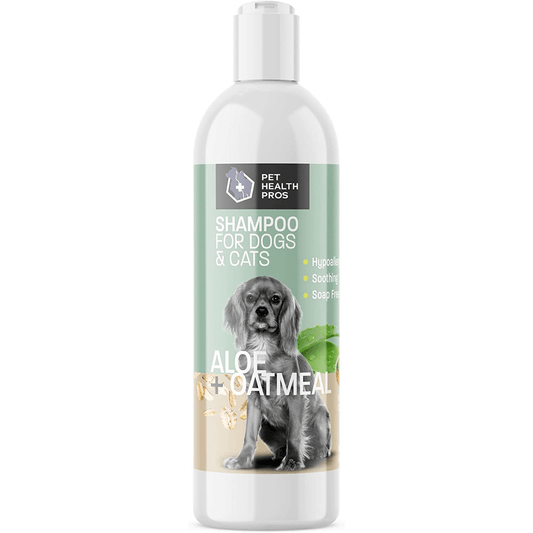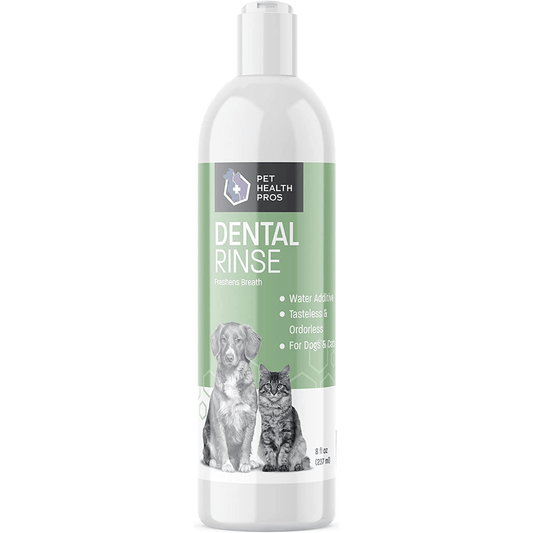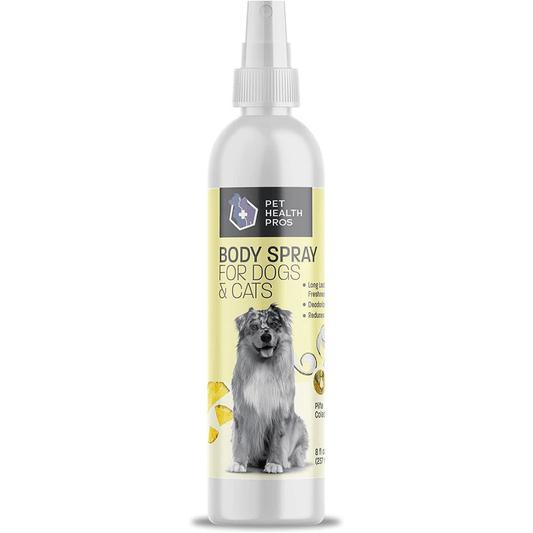Mange is a skin condition in dogs that can be concerning for pet owners. It's caused by tiny mites that can lead to discomfort and visible signs on your dog's skin. In this article, we’ll explore how to identify mange, the types that affect dogs, and share some helpful pictures to aid in recognition. Understanding how to treat and prevent this condition is also crucial for keeping your furry friend healthy and happy.
Key Takeaways
- Mange is caused by mite infestations that can affect a dog's skin and health.
- There are three main types of mange: sarcoptic, demodectic, and cheyletiella, each with different symptoms.
- Recognizing the visual signs, like hair loss and itching, can help you identify mange early.
- Treatment options vary from topical solutions to oral medications, depending on the type of mange.
- Preventative measures, including good hygiene and regular vet visits, can help keep mange at bay.
Identifying Mange In Dogs
Mange is a skin disease caused by parasitic mites. Spotting it early can make a big difference in how quickly your dog recovers and how comfortable they are during treatment. It's not always easy to tell what's going on just by looking, but knowing the signs can help you get your furry friend the help they need.
Common Symptoms of Mange
Okay, so you think your dog might have mange? Here's what to look for. The most common sign is intense itching. We're talking constant scratching, biting, and rubbing against furniture. You might also notice:
- Hair loss, especially around the ears, eyes, and legs.
- Red, inflamed skin.
- Scabs or crusty patches.
- A generally unhappy or restless dog because they're so uncomfortable.
If you see these symptoms, don't panic! Mange is treatable. The important thing is to get a diagnosis from your vet.
Visual Signs of Infestation
Sometimes, you can actually see the effects of mange on your dog's skin. Look closely for things like redness, scaling, and areas where the hair is thinning or completely gone. With sarcoptic mange, you might see small, raised bumps that look like insect bites. Demodectic mange can cause patchy hair loss or, in more severe cases, larger areas of thickened, inflamed skin. Cheyletiella mange, also known as "walking dandruff," is characterized by white flakes that move around in your dog's fur.
Differentiating Types of Mange
There are a few different kinds of mange, and knowing which one your dog has is important for treatment. Here's a quick rundown:
- Sarcoptic Mange: Highly contagious, causes intense itching, and often affects humans too.
- Demodectic Mange: Often seen in puppies with immature immune systems; not contagious to humans or other dogs unless they have a compromised immune system.
- Cheyletiella Mange: Also contagious, but the symptoms are usually milder than sarcoptic mange.
It's best to have your vet do a skin scraping to identify the specific type of mite causing the problem. This will help them choose the right treatment plan.
Types Of Mange Affecting Dogs
Mange isn't just one thing; it's a term for skin diseases caused by different kinds of mites. Knowing which type your dog has is super important because the treatments vary. Let's break down the main types.
Sarcoptic Mange Overview
Sarcoptic mange, also known as canine scabies, is highly contagious, not just to other dogs, but also to humans. These mites burrow under the skin, causing intense itching. It's seriously unpleasant for your dog, and you'll probably notice them scratching like crazy.
Here's what you need to know:
- Intense Itching: This is the hallmark symptom. Dogs will scratch, bite, and rub themselves raw.
- Rapid Spread: It can spread quickly to other animals and people in the household.
- Common Areas: Typically starts on the ears, elbows, belly, and chest.
If you suspect your dog has sarcoptic mange, get them to the vet ASAP. Early diagnosis makes a huge difference in how quickly you can get it under control.
Demodectic Mange Explained
Demodectic mange, or demodex, is a bit different. These mites live in the hair follicles of all dogs, but they only cause problems when a dog's immune system is weakened. It's not contagious to humans or other adult dogs with healthy immune systems. There are two main forms:
- Localized: Small, patchy areas of hair loss, often on the face. It might clear up on its own.
- Generalized: Affects larger areas of the body and can lead to secondary bacterial infections. This form requires more aggressive treatment.
- Pododermatitis: Confined to the paws.
Demodectic mange is often seen in puppies or dogs with compromised immune systems. It's not something to take lightly, especially if it's the generalized form. Your vet can do a skin scrape to confirm the diagnosis and recommend the best course of action. If your dog has a secondary infection, your vet might prescribe medical care.
Cheyletiella Mange Characteristics
Cheyletiella mange is caused by mites that live on the surface of the skin. It's often called "walking dandruff" because you can sometimes see the mites moving around. It's contagious, but usually less severe than sarcoptic mange.
Key things to look for:
- Flaky Skin: Excessive dandruff, especially along the back.
- Mild Itching: Itchiness can vary, but it's usually not as intense as with sarcoptic mange.
- Visible Mites: If you look closely, you might see tiny white mites moving on the skin.
Mange In Dogs Pictures
It can be tough to figure out what's going on with your dog's skin just by looking at it, but pictures can really help! Mange has some pretty distinctive looks, and seeing examples can make it easier to tell what kind your dog might have. Remember, though, pictures are just a starting point. Always get a vet's opinion for a real diagnosis.
Images of Sarcoptic Mange
Sarcoptic mange, also known as canine scabies, is super itchy, and the pictures usually show why. You'll often see intense redness, especially around the ears, elbows, and belly. Hair loss is common in these areas because of all the scratching. Sometimes, you might even see small, raised bumps or scabs. The affected skin often looks raw and inflamed. It's not a pretty sight, and it's definitely not comfortable for your dog.
Demodectic Mange Visuals
Demodectic mange can look different depending on whether it's localized or generalized. Localized demodectic mange often shows up as small, patchy areas of hair loss, usually on the face or legs. The skin might be a little red or scaly, but it's usually not as inflamed as with sarcoptic mange. Generalized demodectic mange, on the other hand, can cover large areas of the body and cause more severe hair loss, skin thickening, and secondary infections. Here's a quick comparison:
| Feature | Localized Demodectic Mange | Generalized Demodectic Mange |
|---|---|---|
| Hair Loss | Small patches | Large areas |
| Inflammation | Mild | Severe |
| Secondary Infections | Rare | Common |
Cheyletiella Mange Photos
Cheyletiella mange is sometimes called "walking dandruff" because you can actually see the mites moving around on the dog's skin. They look like tiny white flakes, hence the dandruff comparison. The infestation usually causes mild itching and scaling, especially along the back. It's not always as dramatic-looking as the other types of mange, but it can still be uncomfortable for your dog. If you suspect your dog has ear mites, it's important to consult with a vet for proper diagnosis and treatment.
Causes Of Mange In Dogs
Mange in dogs isn't just a random occurrence; it stems from specific underlying causes. Understanding these causes is key to preventing and addressing mange effectively. Let's break down the main factors that contribute to mange infestations in our canine friends.
Understanding Mite Infestations
Mange is primarily caused by different types of mites. These tiny parasites burrow into or live on a dog's skin, leading to irritation, inflammation, and hair loss. The type of mite determines the specific type of mange. For example, Sarcoptes scabiei mites cause sarcoptic mange, while Demodex mites cause demodectic mange. The severity of the infestation often depends on the dog's immune system. A healthy immune system can usually keep the mite population in check, preventing a full-blown mange outbreak.
Environmental Factors
Environmental conditions can play a significant role in the development and spread of mange. Here's how:
- Overcrowding: Shelters or kennels with many dogs in close proximity can facilitate the transmission of mites.
- Poor Hygiene: Unsanitary living conditions can create a breeding ground for mites.
- Climate: Warm and humid environments may favor mite survival and reproduction.
It's important to regularly clean and disinfect your dog's bedding and living areas to minimize the risk of mite infestations. Also, be mindful of places where your dog interacts with other animals, such as dog parks or boarding facilities.
Genetic Predispositions
Genetics can influence a dog's susceptibility to certain types of mange, particularly demodectic mange. Some dogs inherit immune system weaknesses that make them less able to control the Demodex mite population. This is why demodectic mange is more common in puppies and young dogs whose immune systems are still developing. Breeders should be aware of this predisposition and take steps to avoid breeding dogs with a history of demodectic mange. If you are looking for medical care for your dog, consult with your vet.
Treatment Options For Mange
Dealing with mange can be a real challenge, but thankfully, there are several ways to tackle it. It's important to work closely with your vet to figure out the best plan for your dog, as the right treatment depends on the type of mange and how severe it is. Let's look at some common approaches.
Topical Treatments
Topical treatments are often the first line of defense, especially for localized mange cases. These usually come in the form of medicated shampoos, dips, or creams that you apply directly to your dog's skin. The goal is to kill the mites and soothe the irritated skin.
- Amitraz dips are a common treatment for demodectic mange, but they need to be used carefully and under veterinary supervision.
- Lime sulfur dips are another option, effective against sarcoptic and cheyletiella mange. They can be a bit smelly, though!
- Miticidal shampoos help to clean the skin and kill mites. Look for ones containing benzoyl peroxide or salicylic acid.
It's super important to follow your vet's instructions exactly when using topical treatments. Overuse or incorrect application can cause skin irritation or other problems. Also, make sure to protect yourself by wearing gloves and avoiding contact with your skin.
Oral Medications
For more severe or widespread mange, oral medications might be necessary. These medications work from the inside out to kill the mites.
- Ivermectin is a common oral medication used to treat both sarcoptic and demodectic mange. However, it's not safe for all dogs, especially certain breeds like Collies, so your vet will need to assess if it's a good option.
- Milbemycin oxime is another oral medication that can be effective, and it's often better tolerated by sensitive breeds.
- Isoxazoline drugs (like fluralaner, afoxolaner, and sarolaner) are newer options that are proving to be very effective against mange mites. They're usually given as a chewable tablet.
Home Remedies and Care
While home remedies shouldn't replace veterinary treatment, they can play a supportive role in managing your dog's comfort and promoting healing. It's important to note that topical treatments are essential for managing mange effectively.
- Keep the affected areas clean. Gently wash your dog with a mild, hypoallergenic shampoo to remove debris and soothe the skin.
- Provide a nutritious diet. A healthy diet supports your dog's immune system, helping them fight off the infestation and heal faster.
- Use soothing baths. Oatmeal baths can help relieve itching and inflammation. Just make sure to dry your dog thoroughly afterward to prevent secondary infections.
Preventing Mange In Dogs
Mange is a nasty business, and nobody wants their furry friend to go through it. Luckily, there are some pretty straightforward things you can do to keep your dog safe and mange-free. It's all about being proactive and keeping an eye out for potential problems.
Maintaining Good Hygiene
Keeping your dog clean is a big part of preventing mange. I'm not saying you need to bathe them every day, but regular grooming and occasional baths can really help. Think of it like this: a clean dog is a less attractive target for mites.
Here's what I try to do:
- Regular Baths: Use a dog-specific shampoo, especially if your dog has sensitive skin. Human shampoo can be too harsh.
- Grooming: Brush your dog regularly. This helps remove loose fur and keeps their skin healthy.
- Clean Bedding: Wash your dog's bed and blankets often. Mites can live in bedding, so this is a must.
Regular Vet Check-ups
Don't skip those vet appointments! Vets can spot problems early, sometimes even before you notice anything is wrong. They can also give you advice tailored to your dog's specific needs. Plus, they can recommend preventative treatments if needed. Regular checkups can help identify skin allergies early on.
Avoiding Contact with Infected Animals
This one seems obvious, but it's worth mentioning. If you know a dog has mange, keep your dog away from it. Dog parks can be risky, so maybe stick to solo walks for a while if there's an outbreak in your area. It's all about minimizing the risk of exposure.
Prevention is always better than cure. By taking these steps, you're giving your dog the best chance at staying healthy and happy. It's not foolproof, but it definitely helps!
Living With A Dog Affected By Mange
It can be tough when your furry friend is dealing with mange, but with the right approach, you can make things easier for both of you. It's all about understanding what your dog needs and how to provide the best care during and after treatment.
Caring for Your Dog During Treatment
First off, consistency is key. Stick to the treatment plan your vet sets out. This usually means regular baths with medicated shampoos, giving oral meds, or applying topical treatments. Make sure you follow the instructions carefully. Also, keep your dog isolated from other pets to prevent the spread of mites. Here's a few things to keep in mind:
- Keep living areas clean by washing your dog's bedding frequently.
- Use vet-approved cleaning products to disinfect areas your dog frequents.
- Wear gloves when handling your dog and wash your hands thoroughly afterward.
Managing Symptoms at Home
Managing the itch is a big part of helping your dog feel better. Try using a cool compress on irritated areas to soothe the skin. You can also ask your vet about dog-safe antihistamines to help with the itching. Diet plays a role too; a balanced diet can boost your dog's immune system, helping them fight off the infestation.
Reintegrating Your Dog Post-Treatment
Once your vet gives the all-clear, it's time to get back to normal. But don't rush it! Gradually reintroduce your dog to their usual activities and social interactions. Keep an eye out for any signs of relapse, like excessive scratching or hair loss. Regular vet check-ups are important to make sure the mange doesn't come back. It's also a good idea to continue with preventative measures, like using mite-control products, especially if you live in an area where mange is common.
Remember, dealing with mange can be stressful, but with patience and the right care, your dog can make a full recovery. Stay positive, follow your vet's advice, and give your dog plenty of love and attention. They'll appreciate it!
Caring for a dog with mange can be tough, but you’re not alone. It’s important to keep your pup comfortable and help them heal. Regular vet visits, proper medication, and a clean environment are key. Make sure to give your dog lots of love and attention during this time. If you want more tips on how to support your furry friend, visit our website for helpful resources!
Wrapping Up on Mange in Dogs
In summary, mange can be a tough issue for both dogs and their owners. Recognizing the signs early is key to getting your furry friend the help they need. If you notice any symptoms, don’t hesitate to reach out to your vet. They can provide the right treatment and advice. Remember, keeping your dog healthy and happy is what matters most. With the right care, your pup can bounce back and be their playful self again.
Frequently Asked Questions
What is mange in dogs?
Mange is a skin condition in dogs caused by tiny bugs called mites. It can make your dog very itchy and uncomfortable.
How can I tell if my dog has mange?
Look for signs like excessive scratching, hair loss, and red or inflamed skin. You might also see scabs or sores.
Are there different types of mange?
Yes, there are several types of mange, including sarcoptic mange, demodectic mange, and cheyletiella mange, each caused by different mites.
How do dogs get mange?
Dogs can get mange from direct contact with other infected animals or from their environment. Some dogs can also develop it due to a weak immune system.
What treatments are available for mange?
Treatment options include medicated shampoos, topical treatments, and oral medications. Your vet can help decide the best option.
Can I prevent mange in my dog?
You can help prevent mange by keeping your dog's living area clean, having regular vet check-ups, and avoiding contact with sick animals.








